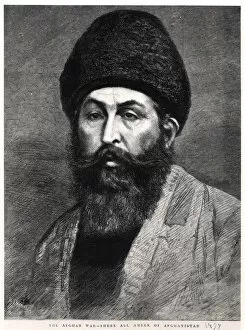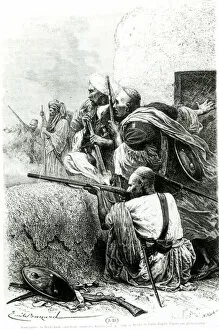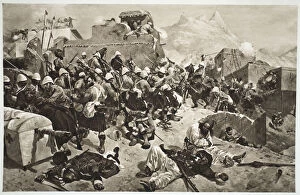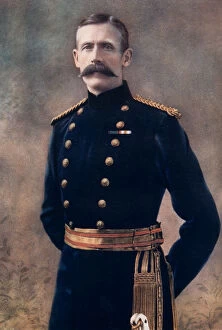Second Afghan War Collection
"The Second Afghan War: A Glimpse into the Historical Battlefields and Diplomatic Endeavors" In 1879, during the Afghan War
For sale as Licensed Images
Choose your image, Select your licence and Download the media
"The Second Afghan War: A Glimpse into the Historical Battlefields and Diplomatic Endeavors" In 1879, during the Afghan War, Major Wigram Battye valiantly met his demise in the fierce Battle of Futtehabad. This conflict, marked by its intensity and strategic significance, unfolded against a backdrop dominated by influential figures such as Emir Shir Ali Khan and Muhammad Ya qub Khan. The signing of the Peace Treaty at Gundamak on May 26th brought temporary respite to this tumultuous period. However, tensions persisted as North-Western Afghan mountain troops engaged in relentless combat against British forces. The engravings depicting these battles vividly portray the courage and determination exhibited by both sides. One particularly remarkable event occurred when General Roberts led his force through hazardous terrain to advance up the Hazardarakht Defile towards Shutargardan in 1901. Despite facing treacherous conditions, they pressed forward with unwavering resolve. Yet not all encounters were victorious for the British forces. In September 1879, General Roberts found himself under attack from ghilzais while traversing the Shutargardan Pass—a testament to the challenges faced during this war. The joint efforts of soldiers from different backgrounds were also noteworthy; exemplified when Highlanders from the 92nd regiment joined forces with Gurkhas to storm Gaudi Mullah Sahibdad in Afghanistan during 1901—an act that demonstrated unity amidst adversity. Amongst these tales of valor and sacrifice was an incident known as "Maiwand: Saving the Guns" which took place in 1883. It showcased heroic actions undertaken by individuals who risked their lives to protect artillery pieces—symbolizing resilience even amidst dire circumstances. Field Marshal Lord Roberts emerged as a prominent figure throughout this era—a distinguished British soldier whose leadership played a pivotal role on numerous occasions within late-19th or early-20th-century Afghanistan. The captivating artwork of "Whos to Pay.



















